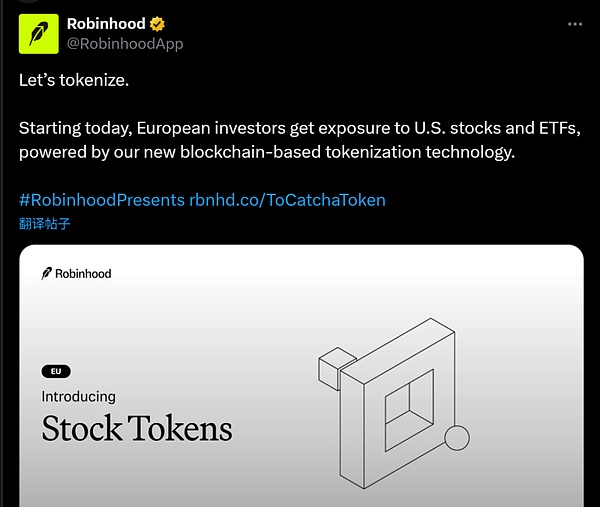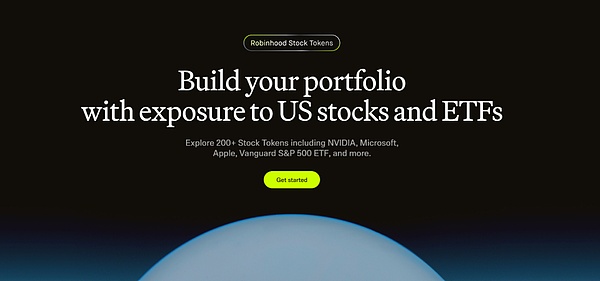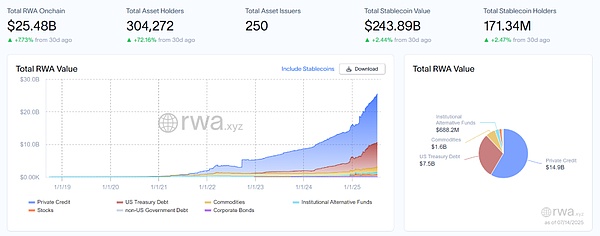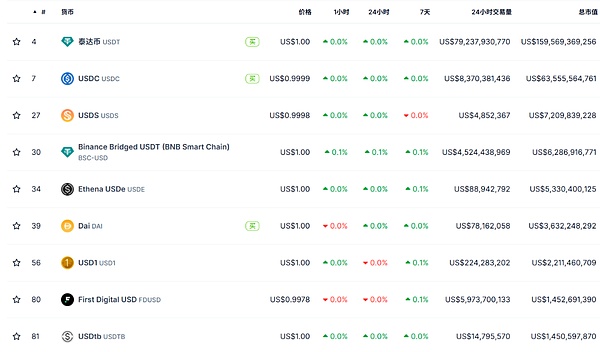Earlier this month, Robinhood and others announced that they would support U.S. stock trading on the blockchain and planned to launch their own public chain. At the same time, Kraken and others also launched U.S. stock token trading pairs such as AAPL, TSLA, and NVDA, setting off a wave of on-chain stock trading.
But is it really a new concept?
In fact, behind this seemingly sudden Tokenization craze is the seven-year history of asset chain evolution in the crypto world - from early synthetic asset experiments, to the actual landing of stablecoins, to the structured access of RWA (real world assets), the narrative main line of "asset × blockchain" has never been interrupted, but now it is ushering in a more realistic and institutional restart.

Tokenization of U.S. stocks - old wine in new bottles
On the surface, stock tokenization seems to be a new trend in the Web3 world, but it is actually more like the resurgence of an old narrative.
Users who have experienced the last round of on-chain prosperity should still remember the whole set of synthetic asset mechanisms pioneered by projects such as Synthetix and Mirror, in which users can mint "synthetic assets" (such as sAAPL and mTSLA) anchored to US stocks, legal currencies, indices and even commodities on the chain through over-collateralization of native crypto assets (such as SNX and UST), realizing asset trading experience without intermediaries.
The biggest advantage of this model is that it does not require real asset custody and liquidation, no counterparty matching, unlimited depth and zero slippage experience, but the ideal is full, but the reality is skinny -
The distortion of the oracle, the violent fluctuation of assets, the frequent occurrence of systemic risks, and the lack of real regulatory integration have led to the gradual withdrawal of this "synthetic asset" from the stage of history. Today, the craze for U.S. stock tokenization is equivalent to moving from "asset synthesis" to "real stock mapping", which can be regarded as a new stage of tokenization narrative entering "off-chain real asset docking".
Take the U.S. stock token trading products launched by Robinhood as an example. From the disclosed information, what is involved behind it is the reconstruction of the on-chain channel and settlement structure of real stock assets, that is,
real stock custody, and funds flow into U.S. stocks through compliant securities firms.

Objectively speaking, although the tokenization of U.S. stocks under this model still has many challenges in terms of compliance paths and cross-border operations, for users, it can be regarded as a brand new on-chain investment window:
No need to open an account, no identity verification, no geographical restrictions, only an encrypted wallet and a stablecoin, you can bypass the cumbersome processes of traditional brokerages and directly trade U.S. stock tokens on DEX, achieving 7×24 hours trading, second-level settlement, and global borderless access. This experience is difficult for global investors, especially non-U.S. residents, to achieve in the traditional securities system.
The establishment of this logic relies on the ability of blockchain as a "clearing and settlement + asset confirmation" infrastructure, and also reflects the huge leap of Tokenization from technical attempts to actual user use.
Furthermore, if we look at it from a more macro perspective, "U.S. stock tokenization" is just a subset of the RWA (real world asset) tokenization process. It reflects the continuous evolution of the asset chain narrative from token issuance to synthetic assets to RWA anchoring since the rise of the Tokenization concept in 2017.
The past and present of Tokenization
Looking back on the development of Tokenization, it is not difficult to find that it runs through the core thread of almost every round of infrastructure innovation and narrative evolution in the crypto world.
It can be said that from the "token issuance boom" in 2017 to the "DeFi Summer" in 2020, to the "RWA narrative" in recent years and the latest "US stock tokenization" landing, we can basically sort out a relatively clear path for the evolution of on-chain assets.
Among them, the earliest large-scale practice of Tokenization began with the token issuance boom in 2017. At that time, the concept of "tokens are equity" ignited the financing imagination of countless entrepreneurial projects, and Ethereum provided it with a low-threshold issuance and fundraising tool, making Token a digital certificate representing future rights (equity, usage rights, governance rights).
However, in the absence of a clear regulatory framework, a lack of value capture mechanism, and serious information asymmetry, a large number of projects have become air coin bubbles, and eventually died down with the ebb of the bull market.
The time came to 2020, and the outbreak of DeFi marked the second climax of Tokenization applications.
A series of on-chain native financial protocols represented by Aave, MakerDAO, and Compound have built a complete set of permissionless and censorship-resistant financial systems with the help of on-chain native assets such as ETH, allowing users to complete complex financial operations such as lending, staking, trading, and leverage on the chain.
Tokens at this stage are no longer financing certificates, but have evolved into core asset categories of on-chain financial instruments, such as wrapped assets (WBTC), synthetic assets (sUSD) to interest-bearing assets (stETH). Even MakerDAO has begun to accept real-world assets such as real estate as collateral to achieve a better integration of traditional finance and DeFi.
The restart of Tokenization is based on this as a watershed, and attempts to introduce more stable and larger real-world assets have begun.
Therefore, the narrative has been further upgraded since 2021, and protocols such as MakerDAO have begun to try to access real estate, government bonds, gold and other real-world assets (RWA) as underlying collateral. The definition of Tokenization has also expanded from "tokenized native assets" to "tokenized off-chain assets."
Different from the abstract assets anchored by codes in the past, RWA represents the confirmation, splitting and circulation of real assets anchored by physical assets or legal rights on the chain. Because their value is relatively stable, the valuation standards are clear, and the compliance supervision has mature experience, it also brings more realistic support to the "value anchor" of on-chain finance.

According to the latest data from the RWA research platform rwa.xyz, the total market size of RWA is currently over US$25 billion, and BlackRock's forecast is more optimistic. By 2030, the market value of tokenized assets is expected to reach US$10 trillion, which means that the potential growth space in the next 7 years may be as high as 40 times or more.
So what real-world assets will be first to be tokenized and become the anchor of RWA's on-chain financialization?
Who will be the bridgehead of Tokenization?
It is no exaggeration to say that
In the past five years, the most successful Tokenization product is neither gold nor stocks, but stablecoins.
It is the first tokenized asset to truly find the "product-market fit (PMF)": mapping cash, the most basic and liquid asset, into the on-chain world, and building the first "value bridge" connecting TradFi and DeFi.
Its operating logic is also very representative. Off-chain, banks or custodians hold real assets (such as US dollars or short-term government bonds), and on-chain tokens of equivalent value (such as USDT, USDC) are issued. Users can hold, pay, trade or interact with DeFi protocols through encrypted wallets.
This not only inherits the stability of legal currency, but also fully releases the advantages of blockchain: efficient settlement, low-cost transfer, 7×24 all-weather trading capabilities, and seamless integration with smart contracts.
As of now, the total market value of global stablecoins has exceeded US$250 billion, indicating that the real implementation of
Tokenization depends on whether it solves the problems of asset circulation and transaction efficiency in reality, rather than relying solely on technological innovation itself. 
Today, the tokenization of US stocks seems to be becoming the next landing point for tokenized assets.
And unlike the synthetic asset models that relied on oracles and algorithms in the past, today's "real stock token" solution is getting closer and closer to real financial infrastructure, and gradually exploring the standard path of "real stock custody + on-chain mapping + decentralized trading".
A noteworthy trend is that mainstream players, including Robinhood, are announcing the launch of native chains or self-developed chains, and supporting real stock trading functions on the chain. From the information disclosed so far,most of the underlying technical partners of these tokenization paths are still based on the Ethereum ecosystem (such as Arbitrum, etc.), which undoubtedly confirms Ethereum's core position as the infrastructure of Tokenization.
The reason is that Ethereum not only has a mature smart contract system, a large developer community and rich asset compatibility standards, but more importantly, its neutrality, openness and composability provide the most scalable soil for financial asset mapping.
Overall, if the previous rounds of Tokenization were crypto-financial experiments driven by Web3 native projects, thenthis time, it is more like a professional reconstruction led by TradFi - with real assets, real regulatory compliance needs and global market demands.
Will this time be the real beginning of Tokenization?
Let's wait and see.
 Catherine
Catherine







